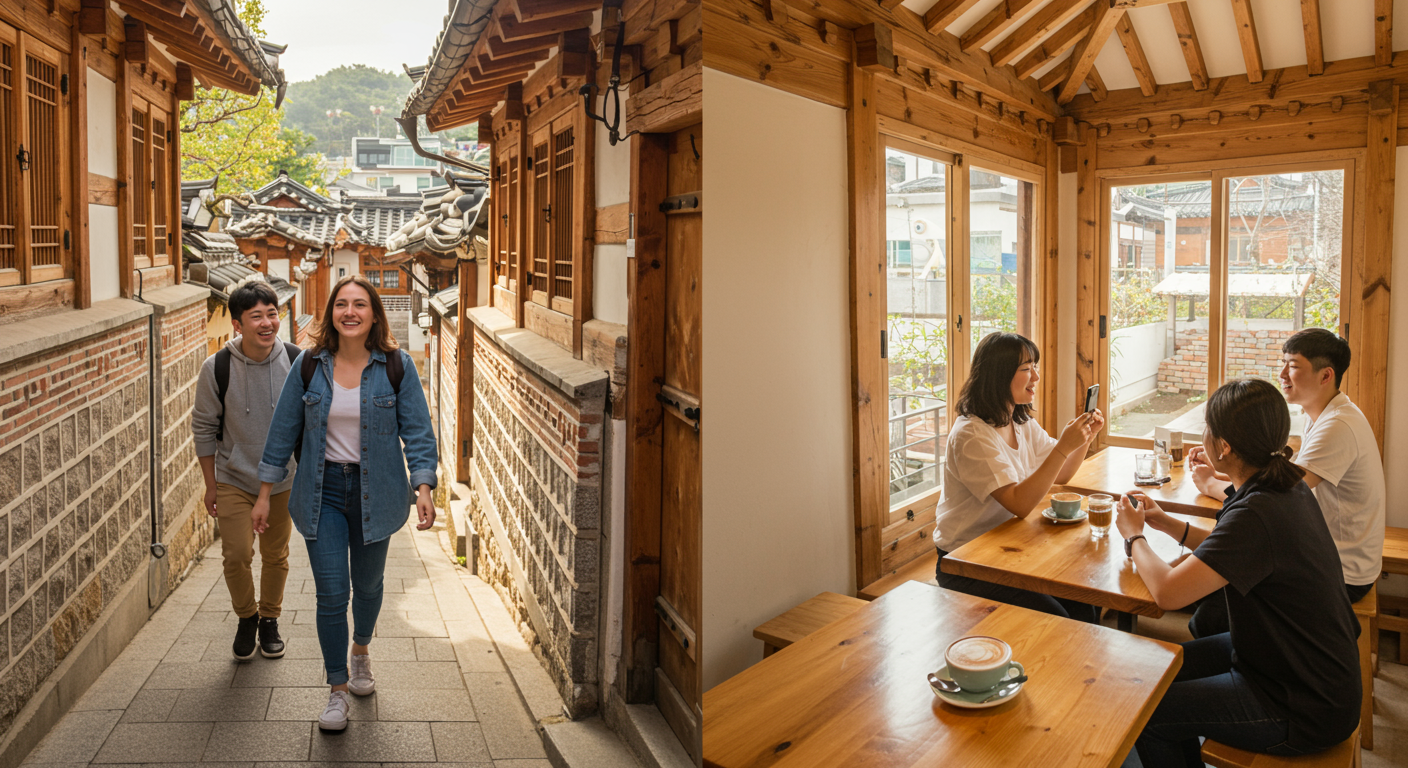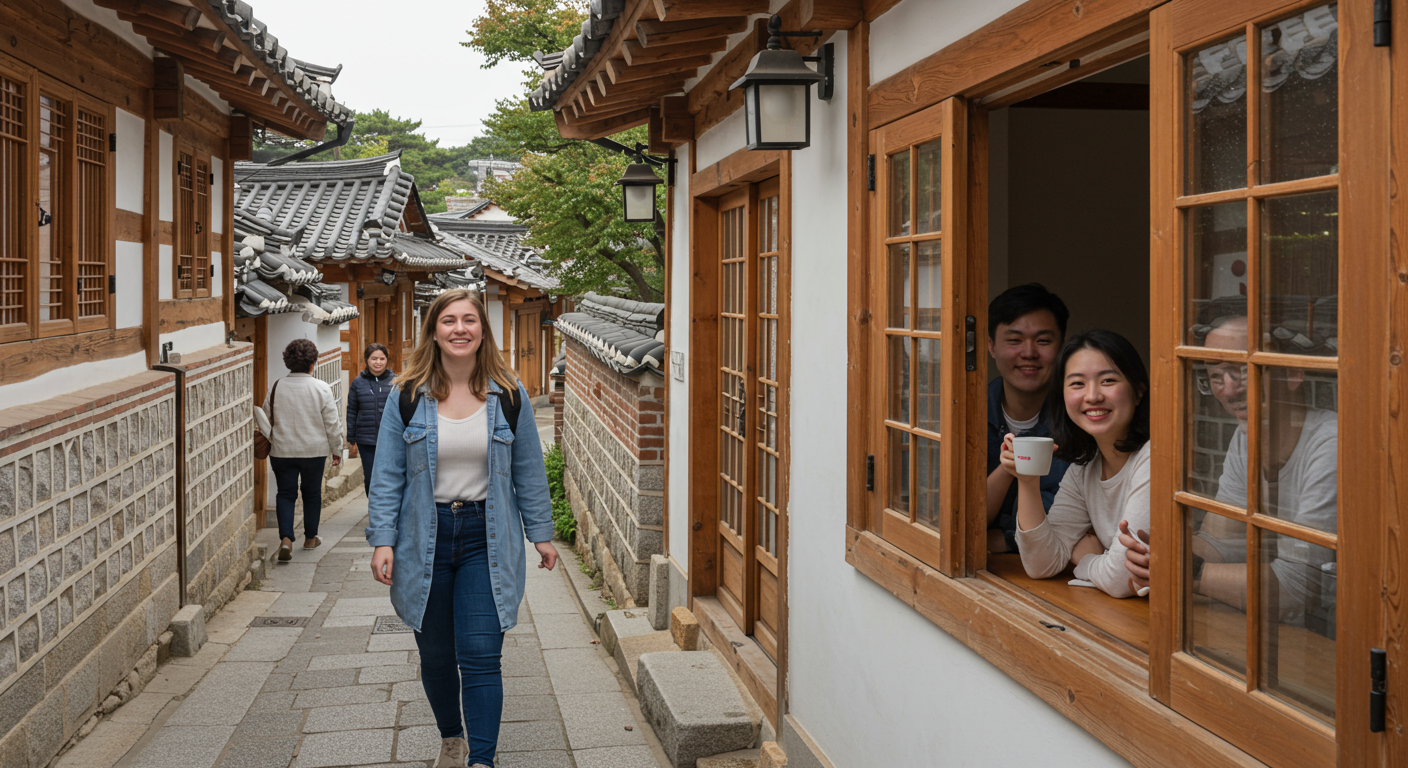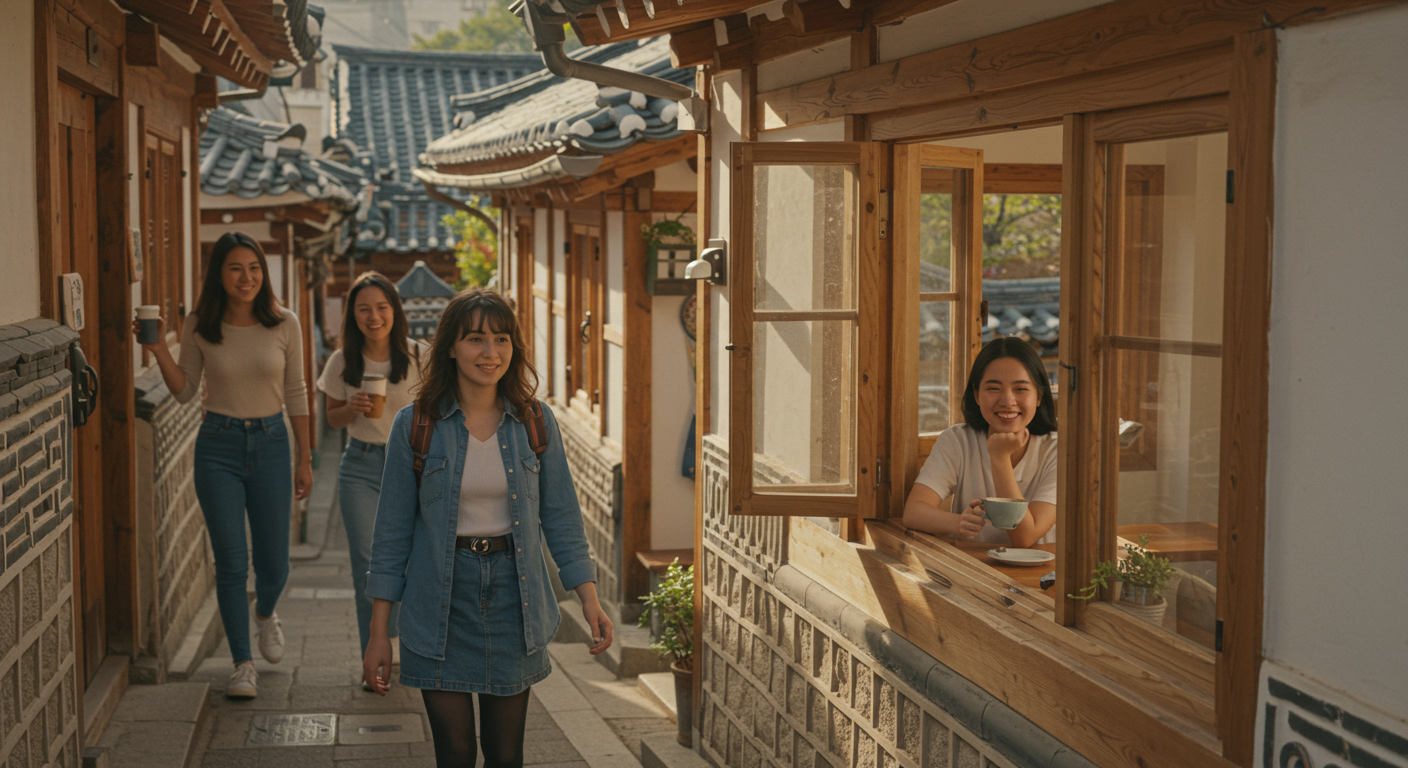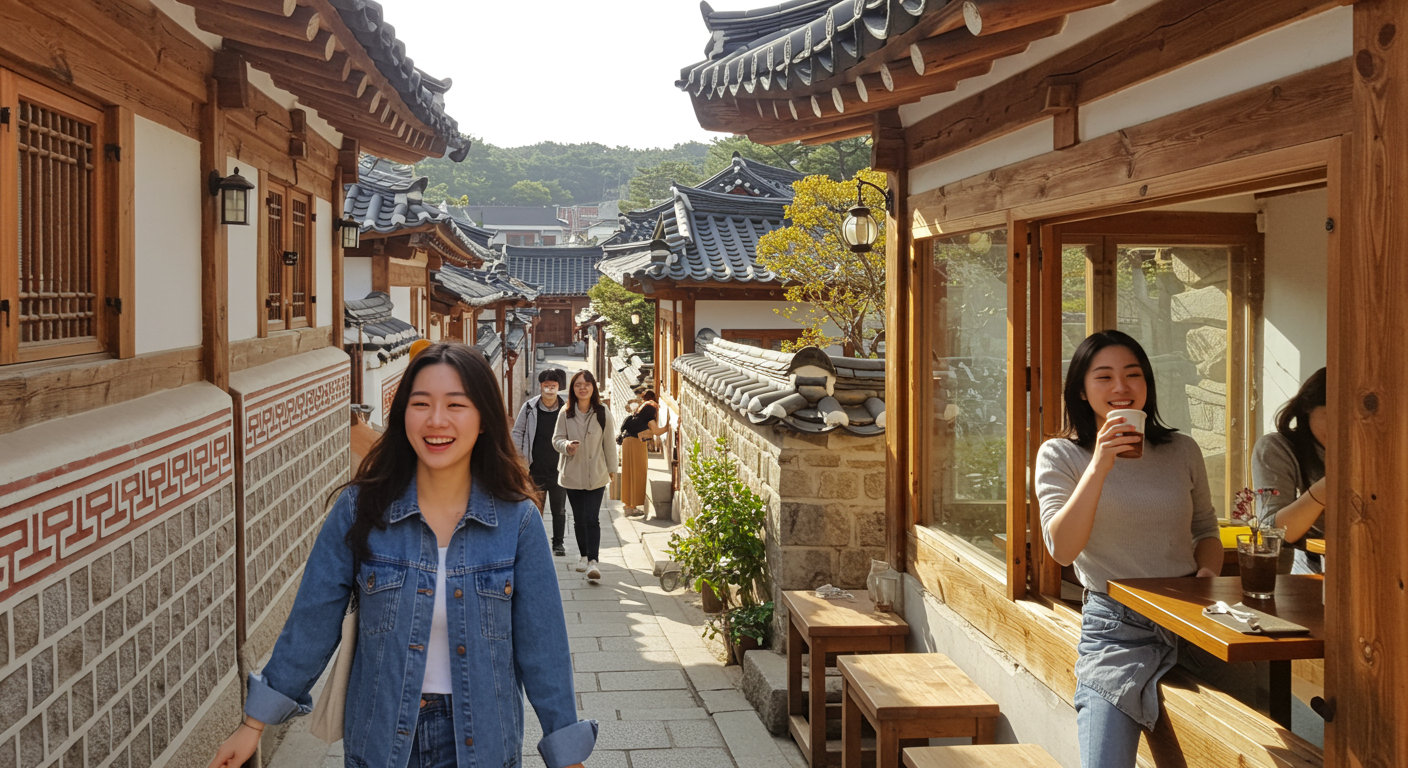My Secret Seoul Find: Ikseondong Hanok Village Back in 2016
My Secret Seoul Find: Ikseondong Hanok Village Back in 2016
Remember that feeling when you stumbled upon a place so cool, so uniquely yours, you almost didn't want to tell anyone?
Yeah, that was me back in 2016. Seoul was already my favorite city, but I always felt like there were these secret corners, just waiting to be discovered. One crisp autumn afternoon, it happened. I found Ikseondong Hanok Village. Back then, honestly, not many people knew about it. And I felt a little bit, okay, maybe a lot, proud of discovering this truly hidden gem. It had this unique atmosphere, a blend of past and present, that just captivated me. I couldn't wait to share its coolness with someone, anyone!
Table of Contents
The Magic of Ikseondong in 2016: A Hidden Gem
Imagine stepping into a time capsule. That’s what Ikseondong felt like for me back in 2016. While places like Hongdae or Gangnam were already bustling with crowds and neon lights, Ikseondong remained this peaceful, almost unassuming enclave of traditional hanok houses tucked away behind Jongno 3-ga Station. The streets were narrow, yes, but they weren't packed shoulder-to-shoulder with tourists. Instead, you'd find a quiet elder sweeping their courtyard, or perhaps a small group of friends sipping coffee in a newly opened cafe that somehow felt like it had been there for decades.
I remember feeling like an actual explorer, charting new territory in a city I thought I knew so well. It wasn't about flashy signs or loud music; it was about the subtle charm of the winding alleys, the gentle scent of roasted beans drifting from a tiny cafe, and the quiet murmur of conversations. It really was like discovering my own little secret. The feeling was pure joy, mixed with a hint of "please don't let this place get too famous."
 Description: "A young woman (late 20s-early 30s) with a bright, curious expression, walking down a narrow, quiet alley in Ikseondong Hanok Village, surrounded by traditional Korean houses (hanoks) with modern cafes subtly integrated. The scene is bathed in warm, soft afternoon light, in a realistic photo style, conveying a sense of discovery and tranquility."
Description: "A young woman (late 20s-early 30s) with a bright, curious expression, walking down a narrow, quiet alley in Ikseondong Hanok Village, surrounded by traditional Korean houses (hanoks) with modern cafes subtly integrated. The scene is bathed in warm, soft afternoon light, in a realistic photo style, conveying a sense of discovery and tranquility."
Where History Breathes: The Hanok's Unique Charm
What truly makes Ikseondong special, even now, are the hanoks (한옥) themselves. These traditional Korean houses, with their beautiful curved roofs and wooden structures, are just stunning. But in Ikseondong, it wasn't just about preserving them; it was about reimagining them. Back in 2016, you could see this transformation beginning. Old hanoks were being repurposed, their traditional bones providing the perfect backdrop for something new.
I recall walking past one hanok that had been turned into a tiny bookstore, its shelves overflowing with books, yet still retaining the peaceful calm of a traditional home. Then, just a few steps away, was another that housed a chic little cafe, serving up artisan coffees. It was this seamless blend of the old and new that gave Ikseondong its unique soul. It truly felt like history wasn't just *preserved*, but was actively *living* and evolving. That's a rare find, I tell ya.
 Description: "A close-up illustration of a traditional Korean hanok roofline with intricate patterns, sharply contrasted by a modern, minimalist coffee cup placed on a wooden window sill in the foreground. Raindrops gently fall outside the window, enhancing the cozy, reflective atmosphere, in a detailed, slightly whimsical illustration style."
Description: "A close-up illustration of a traditional Korean hanok roofline with intricate patterns, sharply contrasted by a modern, minimalist coffee cup placed on a wooden window sill in the foreground. Raindrops gently fall outside the window, enhancing the cozy, reflective atmosphere, in a detailed, slightly whimsical illustration style."
More Than Just Old Houses: My Favorite Spots
Oh, the memories! My visits to Ikseondong in 2016 were filled with little discoveries around every corner. It wasn't just the overall vibe; it was the specific places that truly stood out.
One spot I absolutely adored was this tiny cafe called 'Plant,' though I'm not sure if it's still there in the same form. It was one of the first vegan cafes in a hanok, filled with lush greenery and bathed in soft, natural light. I remember sitting there for hours, just reading a book and sipping on their incredible almond latte. It felt so peaceful, like a secret garden in the middle of the city.
And then there was this small, independent craft shop. It sold unique, handmade jewelry and ceramics. I ended up buying a delicate ceramic mug there, which I still use to this day. It always reminds me of that quiet, artistic side of Ikseondong before it got super popular. This village wasn't just old buildings; it was a canvas for new, creative ventures that felt so authentically unique.
I recall some of my favorite types of places I frequented:
- Hanok Cafes: Not just for coffee, but for the peaceful ambiance and traditional aesthetics.
- Independent Boutiques: Selling unique, often handmade, items you couldn't find in typical shopping districts.
- Tiny Restaurants: Offering a fusion of traditional Korean and modern cuisine in a cozy setting.
- Art Galleries: Small spaces showcasing local artists, adding to the village's creative spirit.
 Description: "An overhead shot of a cozy, dimly lit cafe in Ikseondong, showcasing a barista meticulously pouring latte art. The cafe is bustling with diverse young people chatting and enjoying their drinks, with traditional hanok wooden beams visible overhead, capturing a lively yet intimate vibe in a vibrant, slightly desaturated photo style."
Description: "An overhead shot of a cozy, dimly lit cafe in Ikseondong, showcasing a barista meticulously pouring latte art. The cafe is bustling with diverse young people chatting and enjoying their drinks, with traditional hanok wooden beams visible overhead, capturing a lively yet intimate vibe in a vibrant, slightly desaturated photo style."
Ikseondong Then vs. Now: What's Changed?
Well, you probably know the answer to this already, don't you? Ikseondong isn't exactly a "hidden gem" anymore. It blew up, became super popular, and is now a must-visit spot on every tourist's itinerary. Part of me, the nostalgic part, misses the quiet alleys and the feeling of having discovered something truly unique.
Today, the narrow streets are often bustling with people, especially on weekends. More trendy restaurants, photogenic cafes, and Instagram-ready spots have popped up. It’s certainly more vibrant, more commercially developed. And while it still retains its hanok charm, the atmosphere has shifted from a serene retreat to a lively, bustling destination. It’s a bittersweet transformation, if you ask me. I mean, it's great that more people can experience the beauty of hanoks, but sometimes you just crave that quiet moment, you know?
 Description: "A split image showing two scenes: on the left, a quiet, almost empty Ikseondong alley from 2016 with a few locals. On the right, the same alley in the current year, now bustling with tourists and vibrant storefronts. The contrast evokes a feeling of nostalgia and popular transformation, in a realistic, comparative photo style."
Description: "A split image showing two scenes: on the left, a quiet, almost empty Ikseondong alley from 2016 with a few locals. On the right, the same alley in the current year, now bustling with tourists and vibrant storefronts. The contrast evokes a feeling of nostalgia and popular transformation, in a realistic, comparative photo style."
Planning Your Visit: Tips for Today's Ikseondong
Even with the crowds, Ikseondong is absolutely still worth a visit. It's beautiful, charming, and has a vibe you won't find anywhere else in Seoul. Here are my tips for making the most of your trip today:
- Go Early or Late: To avoid the peak crowds, try visiting on a weekday morning or later in the evening. It’s a completely different experience when it’s less crowded.
- Explore Beyond the Main Streets: Venture into the smaller, quieter alleys. That’s where you’ll still find some of the more unique and less commercialized spots, reminiscent of its 2016 days.
- Embrace the Hanok Charm: Don’t just rush through. Take a moment to appreciate the architecture, the intricate details of the hanoks. Many cafes and restaurants have beautiful courtyards worth lingering in.
- Try a Hanok Stay: For a truly immersive experience, consider booking a night or two in one of the hanok guesthouses nearby.
Your Questions About Ikseondong Answered
Absolutely! While it's more crowded now, Ikseondong still offers a unique blend of traditional Korean architecture and modern cafes, shops, and restaurants. Its charm lies in the narrow alleys and the beautifully renovated hanoks. It's a great place to experience a different side of Seoul compared to the more commercial areas.
Even with the crowds, the architectural beauty and the creative energy of the repurposed hanoks are captivating. Just be prepared for more people and consider visiting during off-peak hours for a more relaxed experience.
Ikseondong is super accessible by subway. The easiest way is to take Seoul Subway Line 1, 3, or 5 to Jongno 3-ga Station (종로3가역). Take Exit 4 or 6, and you'll be right there, just a short walk from the village entrance.
This station is a major transfer point, making it convenient from almost anywhere in Seoul. You won't have any trouble finding it!
So, there you have it. My little trip down memory lane to Ikseondong in 2016. It was a special time, discovering a place that felt so genuinely ours, a secret kept amongst a few. While it's certainly not a secret anymore, its charm, its history, and that undeniable blend of old and new still make it a unique corner of Seoul that I cherish. I hope you get to experience its magic, whether it's through my stories or by visiting it yourself. And who knows, maybe you'll find your own little secret within its charming alleys.
© 2024 Seoul Insider's Guide. All Rights Reserved.
Comments
Post a Comment